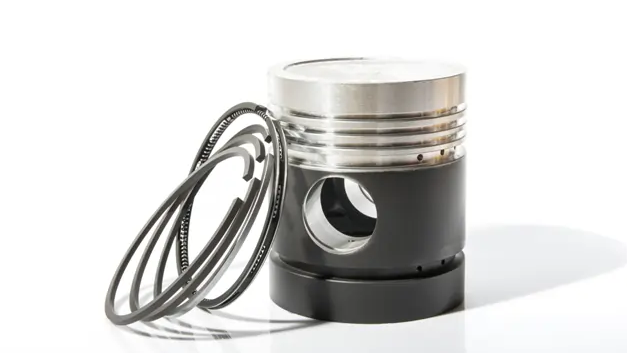Piston rings play a crucial role in the performance, efficiency, and longevity of an engine. These small yet significant components are tasked with sealing the combustion chamber, regulating oil consumption, and dissipating heat. This blog post will delve into the role of piston rings in engine efficiency and longevity, focusing on the materials and designs that make them so indispensable.
The Role of Piston Rings
Piston rings are circular bands that sit in grooves on the outer diameter of the piston. They have three primary functions:
- Sealing the Combustion Chamber: The top rings, also known as compression rings, seal the combustion chamber from any leakage during the combustion process. This ensures maximum power output and reduces fuel consumption.
- Regulating Oil Consumption: The second ring controls oil supply to the liner for lubrication and returns excess oil back to the oil sump. This prevents excessive oil from entering the combustion chamber, which could lead to increased emissions and decreased engine efficiency.
- Dissipating Heat: Piston rings serve as a conduit for heat transfer, moving heat away from the piston to the cylinder wall and then to the engine’s cooling system.
Materials Matter
Piston rings can be made from a variety of materials, each with its own advantages and disadvantages. Cast iron, ductile iron, and steel are common choices due to their excellent wear resistance and heat conductivity.
Cast Iron Rings: These rings are cost-effective and offer good wear resistance. However, they may lack the strength needed for high-performance or heavy-duty applications.
Ductile Iron Rings: Ductile iron is stronger and more flexible than cast iron, making it a better choice for high-stress environments. It can withstand higher temperatures and pressures without deforming or cracking.
Steel Rings: Steel rings are the strongest and most durable. They are often used in high-performance and heavy-duty engines. However, they are also the most expensive option.
Design Innovations
The design of piston rings has evolved over time to meet the demands of modern engines. Today, manufacturers use advanced engineering techniques to create rings that offer superior sealing, reduced friction, and improved heat transfer.
For example, some rings feature a barrel face design, which helps maintain a more consistent seal as the ring moves up and down the cylinder. Others incorporate a taper or napier design on the second ring, which improves oil control and reduces blow-by.
Another innovation is the use of PVD (Physical Vapor Deposition) and DLC (Diamond-Like Carbon) coatings. These coatings enhance the hardness of the ring, reduce friction, and increase resistance to wear and scuffing.
\
Conclusion
Piston ring technology is a critical aspect of engine performance and efficiency. By choosing the right materials and designs, manufacturers can optimize the functionality of piston rings, enhancing engine efficiency, reducing emissions, and extending engine life. As engines continue to evolve, so too will the technology of piston rings, continually pushing the boundaries of performance and efficiency.

A top ranking student throughout, Akshay joined the family business right after graduation in 2006. After working for over 10 years in Agra Engineering Co, he decided to start his own company. Now as a partner in this new company he looks after business development and vendor management. A keen fitness enthusiast he tries new forms of exercise – crossfit, calisthenics, pilates, yoga and swimming. He’s an avid golfer as well – one of his many hobbies.







